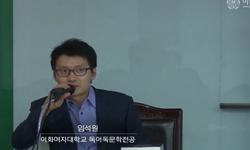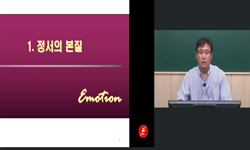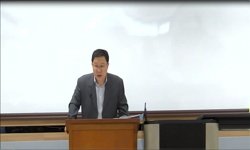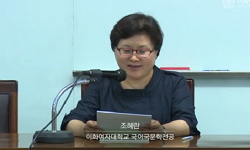본고는 19세기 여성이 쓴 기행가사의 진술방식과 정서표현을 분석하여 여성기행가사가 조선시대 기행가사와 여성 창작 문학 내에서 가지는 문학사적 의미를 발견하고자 했다. 기존의 연구...
http://chineseinput.net/에서 pinyin(병음)방식으로 중국어를 변환할 수 있습니다.
변환된 중국어를 복사하여 사용하시면 됩니다.
- 中文 을 입력하시려면 zhongwen을 입력하시고 space를누르시면됩니다.
- 北京 을 입력하시려면 beijing을 입력하시고 space를 누르시면 됩니다.
https://www.riss.kr/link?id=A108925768
-
저자
권오윤 (서울대학교)
- 발행기관
- 학술지명
- 권호사항
-
발행연도
2023
-
작성언어
Korean
-
주제어
여성기행가사 ; 규방가사 ; 기행가사 ; 진술방식 ; 정서 표현 ; 19세기 ; Women’s travel Gasa ; Gyubang Gasa ; Method of statement ; Emotional expression ; 19th century
-
등재정보
KCI등재
-
자료형태
학술저널
- 발행기관 URL
-
수록면
631-676(46쪽)
- 제공처
-
0
상세조회 -
0
다운로드
부가정보
국문 초록 (Abstract)
본고는 19세기 여성이 쓴 기행가사의 진술방식과 정서표현을 분석하여 여성기행가사가 조선시대 기행가사와 여성 창작 문학 내에서 가지는 문학사적 의미를 발견하고자 했다. 기존의 연구는 여성기행가사가 사대부 기행가사를 계승하면서도 여성으로서의 특성이 작품 내용에 반영되어 있다고 보았다. 가족에 대한 관심, 정서 표현의 강조는 여성 작자의 특수한 면모로 지적되었고, 대상을 표현하는 방식에서 기존 기행가사를 계승하는 보편적 면모가 주목되었다. 본고는 여성기행가사의 특수성과 보편성을 분리하여 설명한 기존의 연구에서 나아가, 일상과 여행지라는 공간 배경의 차이에 있어서 여성의 정서 표현이 다르게 나타난 부분에 주목했다. 본고는 19세기 여성기행가사 작품인 「부여노정기」, 「금행일기」, 「호남기행가」를 다루고 있다. 이중 「부여노정기」와 「금행일기」는 각각 연안이씨(延安李氏, 1737~1815)와 은진송씨(恩津宋氏, 1803~1860)이라는 양반가 사대부 여성에 의해 창작되었다. 「호남기행가」는 가마를 타고 이동하는 여행방식과 문학 전범의 활용 양상이 다른 여성기행가사와 유사한 작품이다. 본고는 이를 토대로 「호남기행가」를 양반 사대부 여성 창작 작품으로 보았다. 본고는 진술방식과 정서 표현을 중심으로 세 작품을 다음과 같이 분석했다. 「부여노정기」는 사대부가 여성으로서의 자부심과 권위적 태도가 드러나고, 시간의 흐름에 따른 서술방식을 쓰되, 사건을 선택적으로 제시한 작품이다. 「부여노정기」의 화자는 여행을 여성으로서의 역할을 잘 해낸 것에 대한 보상으로 인식하고 있다. 「금행일기」는 한 가정을 책임지는 주부인 화자가 여행지에서 누리는 풍류적 흥취를 강조한 작품이다. 경관을 드러내는 데에 서사적 진술과 묘사를 진술방식으로 활용한다. 정서 표현 측면에서는 신변탄식과 구경에 대한 욕심으로 진솔한 내면을 드러낸 것이 특징이다. 「호남기행가」는 경치를 묘사하는 과정에서 다양한 수사적 표현을 활용해 체험을 문학적으로 형상화한 작품이다. 화자의 정체성이 드러나는 부분은 소략하지만, 여행에 대한 욕구와 창작에 대한 욕구는 직접적으로 표현되어 있다. 여성 작가들은 독자를 여성으로 설정하고, 함께 정서를 공유하기에 적합한 국문 가사를 창작했다. 여성기행가사는 가족 공동체 안에서의 여행일지라도 여성이 그 과정을 주체적인 여행 체험으로 인식했다는 것을 보인다. 여성들이 독자와 표현방식을 고려할 만큼 문학 창작자로서 의식 성장을 이룬 점은 19세기 여성기행가사가 갖는 문학사적 의미이다.
다국어 초록 (Multilingual Abstract)
Existing studies have shown that female travel Gasas inherited the travel Gasas of the nobleman and the characteristics of women are reflected in the contents of the work as well. The emphasis on family interest and emotional expression was pointed out as a particular aspect of female authors, and the universal aspect of inheriting existing travel Gasa in expressing objects was also noted.
In addition to the previous study that explained the specificity and universality of women's travel Gasa, this paper revealed the meaning of using typical expressions considering the artist's gender, and specifically focused on women’s different emotional expressions depending on the spacious background they were in such as daily life basis and travel places.
Based on the transmission form of the work, author, travel motivation, composition of the work, journey, and travel method, this paper introduced three different works of women's travel Gasa in the 19th century. Among them, 〈Buyeonohjeonggi〉 and 〈Geumhaengilgi〉 were created by noble women named Yeonan Lee (延安李氏, 1737~1815) and Eunjin Song (恩津宋氏, 1803~1860), respectively. 〈Honamgihaengga〉 is a work similar to women's travel Gasa in terms of riding a sedan chair as a travel method and by looking at typical expressions of literature. Based on the aforementioned ideas, this paper viewed 〈Honamgihaengga〉 as a female creative work of the aristocrats. If there were different copies among the three works, they were briefly introduced and unified into one single name.
This paper analyzed the three works by focusing on the method of a statement and emotional expression. 〈Buyeonohjeonggi〉 is a work that reveals a woman’s pride and authoritative attitude, and uses a narrative method over the time, but selectively presents the events. The speaker of 〈Buyeonohjeonggi〉 recognizes travel as a reward for playing a good role as a woman. 〈Geumhaengilgi〉 is a work that emphasizes the poetical taste of the speaker, who is a housewife in charge of a family and enjoys time at travel destination. Epic statements and descriptions are used as statements to describe the landscape. Regarding the aspect of expressing emotions, it honestly reveals the inner side of oneself who desire to lament one’s situation and express eager to sightsee. 〈Honamgihaengga〉 is a literary representation of the experience using various rhetorical expressions in the process of describing the scenery. The speaker's identity is rarely revealed in this work, but the desire for travel and the desire for creating Gasa is directly expressed.
To sum up, the 19th century women's travel Gasa showed three distinctive characteristics. First, the process of establishing women’s self-identity through building relationships with the outside world is shown in women’s travel Gasa. Second, the speaker honestly tells her feelings about what she has seen and expresses a new desire that she realized at the travel destination. Third, by recording the experiences, narrative and descriptive features are shown based on the author’s experiences in the outside world.
In the creation of travel Gasa from the early Joseon Dynasty to the late Joseon Dynasty, travel Gasa has expanded the hierarchy of authors, lengthened the work, and contained the characteristics of seeking for visiting real sites. The expansion of women becoming authors, using narrative statements, describing landscape through imagery, and se...
This paper analyzed the statements and emotional expressions of travel Gasa written by women in the 19th century. It was written to discover the literary and historical significance of women’s travel Gasa by analyzing Joseon Dynasty travel Gasa, and...
This paper analyzed the statements and emotional expressions of travel Gasa written by women in the 19th century. It was written to discover the literary and historical significance of women’s travel Gasa by analyzing Joseon Dynasty travel Gasa, and women’s creative literature. Women's travel Gasa reflects the universality of travel Gasa and the specificity of the subject of women's travel. This was suitable to discover the new aspect of women who became Gasa creators in the 19th century.
Existing studies have shown that female travel Gasas inherited the travel Gasas of the nobleman and the characteristics of women are reflected in the contents of the work as well. The emphasis on family interest and emotional expression was pointed out as a particular aspect of female authors, and the universal aspect of inheriting existing travel Gasa in expressing objects was also noted.
In addition to the previous study that explained the specificity and universality of women's travel Gasa, this paper revealed the meaning of using typical expressions considering the artist's gender, and specifically focused on women’s different emotional expressions depending on the spacious background they were in such as daily life basis and travel places.
Based on the transmission form of the work, author, travel motivation, composition of the work, journey, and travel method, this paper introduced three different works of women's travel Gasa in the 19th century. Among them, 〈Buyeonohjeonggi〉 and 〈Geumhaengilgi〉 were created by noble women named Yeonan Lee (延安李氏, 1737~1815) and Eunjin Song (恩津宋氏, 1803~1860), respectively. 〈Honamgihaengga〉 is a work similar to women's travel Gasa in terms of riding a sedan chair as a travel method and by looking at typical expressions of literature. Based on the aforementioned ideas, this paper viewed 〈Honamgihaengga〉 as a female creative work of the aristocrats. If there were different copies among the three works, they were briefly introduced and unified into one single name.
This paper analyzed the three works by focusing on the method of a statement and emotional expression. 〈Buyeonohjeonggi〉 is a work that reveals a woman’s pride and authoritative attitude, and uses a narrative method over the time, but selectively presents the events. The speaker of 〈Buyeonohjeonggi〉 recognizes travel as a reward for playing a good role as a woman. 〈Geumhaengilgi〉 is a work that emphasizes the poetical taste of the speaker, who is a housewife in charge of a family and enjoys time at travel destination. Epic statements and descriptions are used as statements to describe the landscape. Regarding the aspect of expressing emotions, it honestly reveals the inner side of oneself who desire to lament one’s situation and express eager to sightsee. 〈Honamgihaengga〉 is a literary representation of the experience using various rhetorical expressions in the process of describing the scenery. The speaker's identity is rarely revealed in this work, but the desire for travel and the desire for creating Gasa is directly expressed.
To sum up, the 19th century women's travel Gasa showed three distinctive characteristics. First, the process of establishing women’s self-identity through building relationships with the outside world is shown in women’s travel Gasa. Second, the speaker honestly tells her feelings about what she has seen and expresses a new desire that she realized at the travel destination. Third, by recording the experiences, narrative and descriptive features are shown based on the author’s experiences in the outside world.
In the creation of travel Gasa from the early Joseon Dynasty to the late Joseon Dynasty, travel Gasa has expanded the hierarchy of authors, lengthened the work, and contained the characteristics of seeking for visiting real sites. The expansion of women becoming authors, using narrative statements, describing landscape through imagery, and se...
동일학술지(권/호) 다른 논문
-
누구의 목소리로 위기를 말할 것인가: 기후위기를 구성하는 언어에 대한 비판과 재구성
- 민족문학사연구소
- 채효정
- 2023
- KCI등재
-
프로문학 연구의 현실 인식과 전망: 2010년대 이후 연구를 중심으로
- 민족문학사연구소
- 최병구
- 2023
- KCI등재
-
조선 후기 전란을 기억하는 몇 가지 방식: 전란 소재 야담의 양상에 주목하여
- 민족문학사연구소
- 정환국
- 2023
- KCI등재
-
- 민족문학사연구소
- 김인경
- 2023
- KCI등재





 KISS
KISS






